I always thought that rodeos were only held in Texas, with brave cowboys lassoing bulls. But it turns out that Patagonia has its own version of rodeo. In this blog post, I’ll share my experience attending a Chilean rodeo competition in Cochran.
Содержание
The History of Rodeo in Chile: From Gauchos to the National Sport
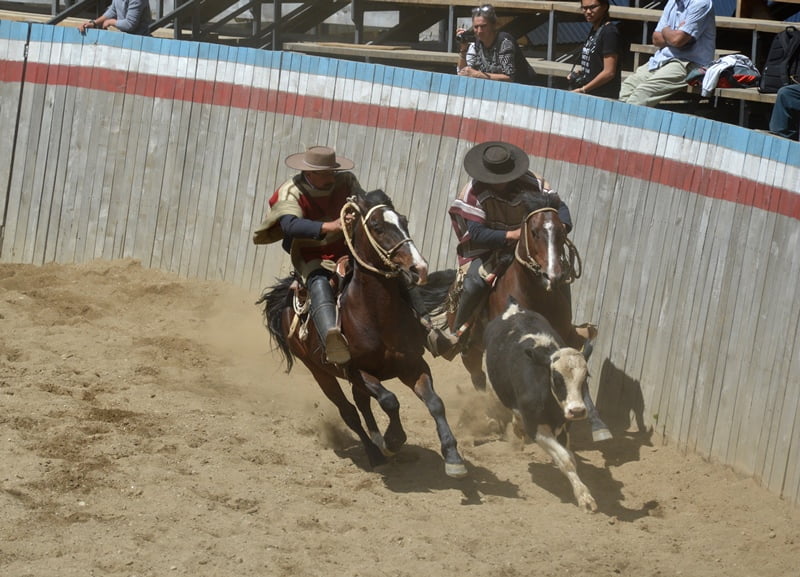
Chilean rodeo has a rich history that dates back to the 19th century. The gaucho* would drive their flocks of cattle to mountain pastures in the summer and return to the valleys in the winter. This work required skill and strength, as the animals often tried to fight off the herd or fall into ravines. These people developed impressive techniques for driving cattle, catching misbehaving animals, and handling their horses. In the winter, they were responsible for sorting cattle by the owner and marking offspring. All this originally was called a rodeo.
* Gauchos are traditional horsemen in Chilean Patagonia. They are similar to cowboys in other parts of the world and are skilled at driving cattle and handling horses.
In the 1880s, the invention of barbed wire made the work of shepherds obsolete, but their skills were still highly valued. As a result, rodeo transitioned from a necessity to a sport. In 1961, rodeo became an official sport in Chile.
Chilean rodeo has traditionally been a male-dominated sport, but women have been allowed to participate since the 20th century. Previously, their involvement was limited to the Rodeo Queen beauty pageant. Nowadays, they can compete alongside men.

Today, the Chilean rodeo is a unique and exciting part of the country’s culture. It is showcasing the skills and teamwork of the riders and their horses. The main arena for rodeo competitions is located in Rancagua, about an hour’s drive from Santiago. Every year, the all-Chilean championship is held there, attracting participants from all over the country.
Where and When to See A Rodeo Competition in Chile
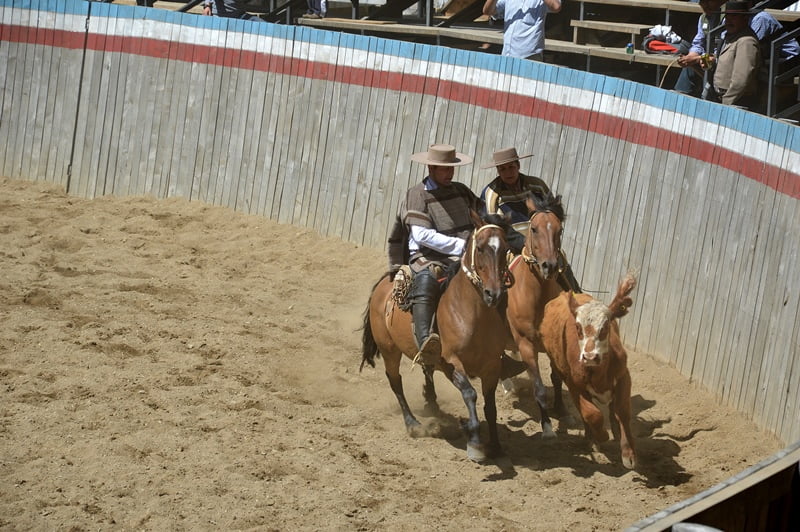
The season for Chilean rodeo begins in September, on Chile’s independence day, and ends in April with the National Rodeo Championship Finals. This event is held at the Monumental Stadium of Rancagua. This is the largest equestrian events venue in the world, with a seating capacity of 20,000 people.
You can find the schedule for rodeo competitions in different cities on the website: https://ferochi.cl/calendario-de-rodeos/
In addition to these large competitions, there are local rodeo events that take place throughout the country. It can be hard to find a calendar for these events. Here are a few links to the local rodeo clubs:
- Rodeo club in Chile Chico
- Rodeo in Aysen region
- Calendar for the rodeo clubs in Pucon
- Fiesta Costumbrista in Cochrane takes place every February. It includes a rodeo competition, concerts, traditional games, and artisanal markets.
My Journey to Patagonia: Discovering the World of Chilean Rodeo
I’ve seen a Chilean rodeo during my trip to Patagonia, in the small town of Cochrane. Locals invited me to attend a rodeo competition.
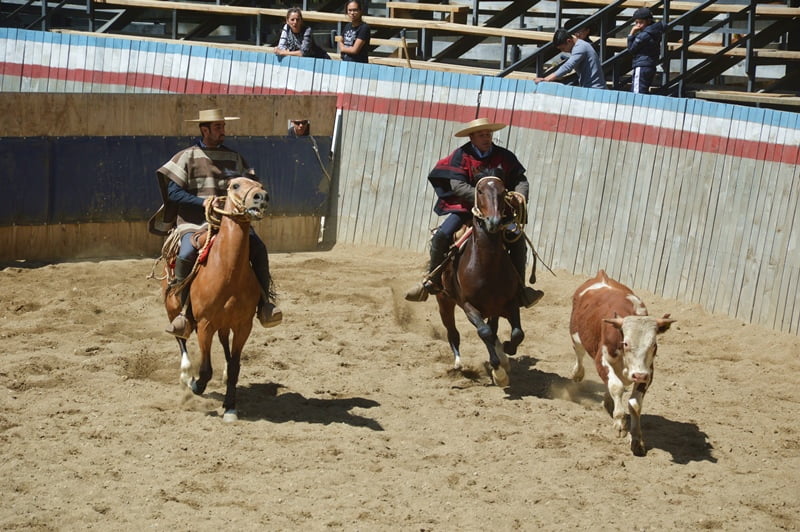
Unlike other rodeos, the Chilean version is a less extreme and spectacular sport. For example, in the USA, cowboys try to milk a wild cow on the go. In Cuba, they hold onto a wild bull without a saddle, and in Venezuela, bullfighters knock the bull to the ground and grab it by the tail. In contrast, the main focus of Chilean rodeo is working in pairs and technical performance. It is a simpler, yet still exciting and culturally significant sport.
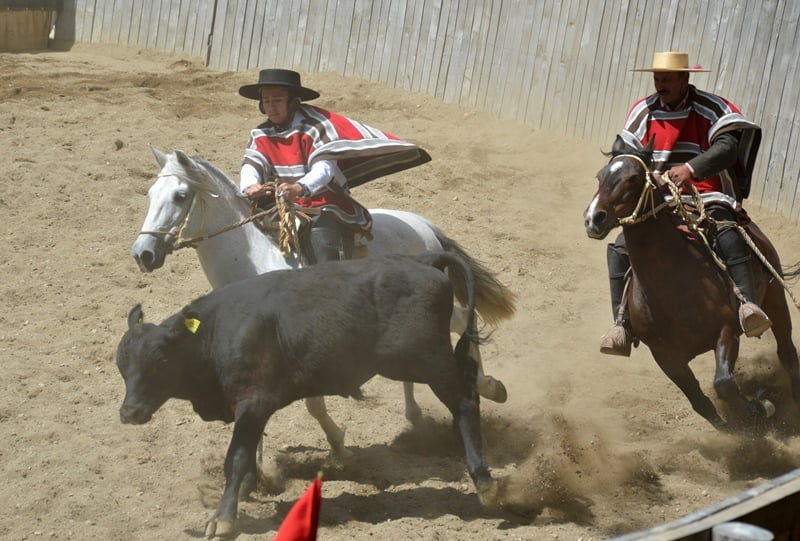
The horsemen are known as huasos. They wear special garments called chamantos, which are similar to ponchos, and wide-brimmed straw hats. Their leather boots have long spurs. The stirrups are carved out of wood in the shape of shoes.
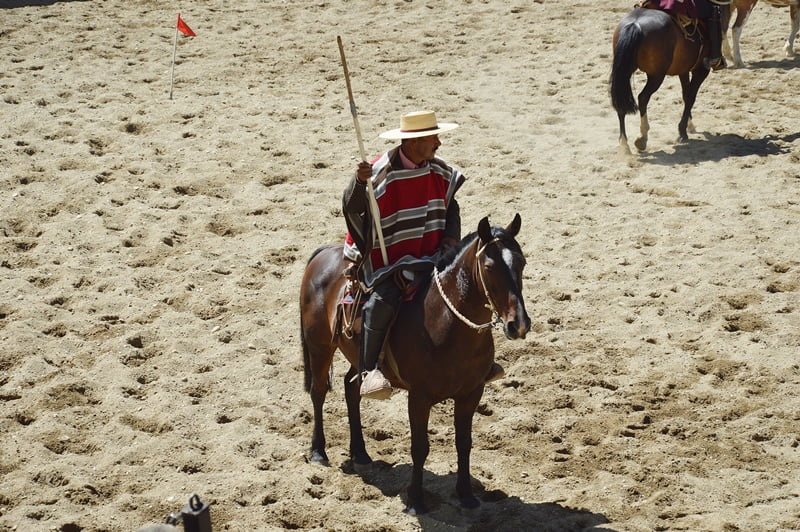
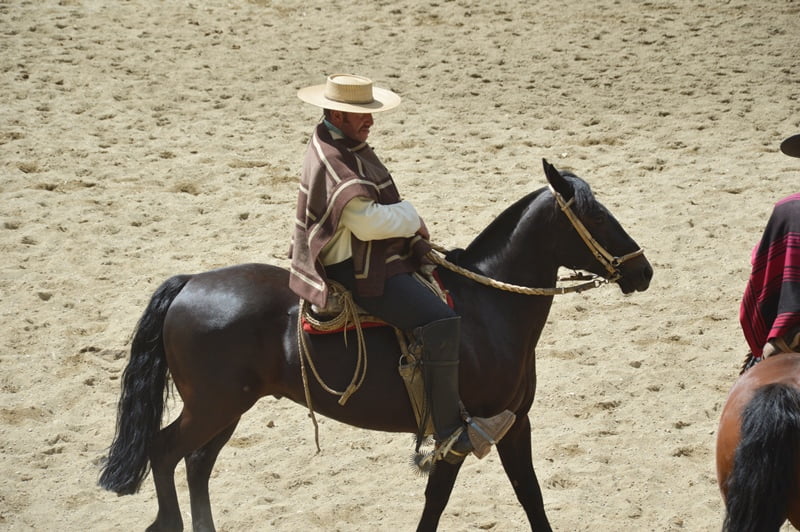
Rodeo competitions in Patagonia bring the whole community together. Families spend the day at the site, enjoying food, drinks, and traditional dancing called cueca. Chilean rodeo competitions usually last for one or two days (usually on Saturdays and Sundays).
Video of the Chilean rodeo in Patagonia
I recorded a video of two games from those competitions.
The Fundamentals of Chilean Rodeo
Main goal of the Chilean rodeo competition is to stop the young bull by pressing it against the fence with the body of the horse.
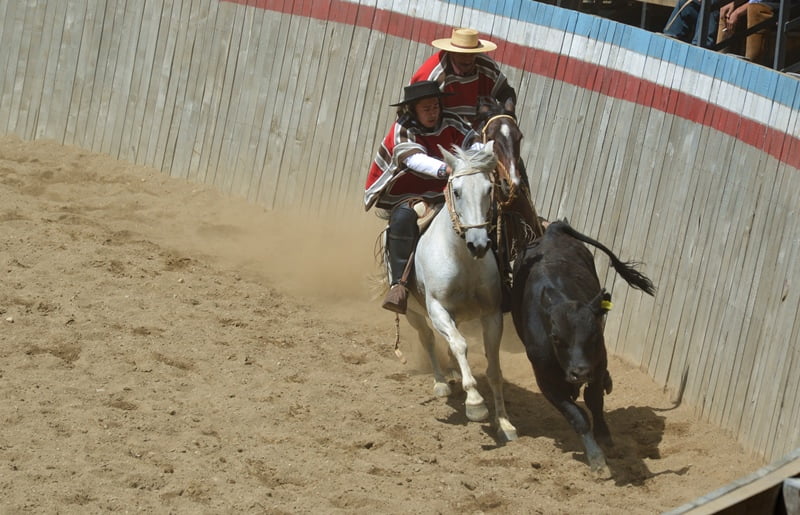
The arena is divided into two sections. One part where the action takes place is shaped like a crescent moon. Firstly, the bull is released into the first part of the arena. Then the riders take up positions. One stay behind the animal and the other on the side. They guide the bull into a narrow passage to the second half of the arena.
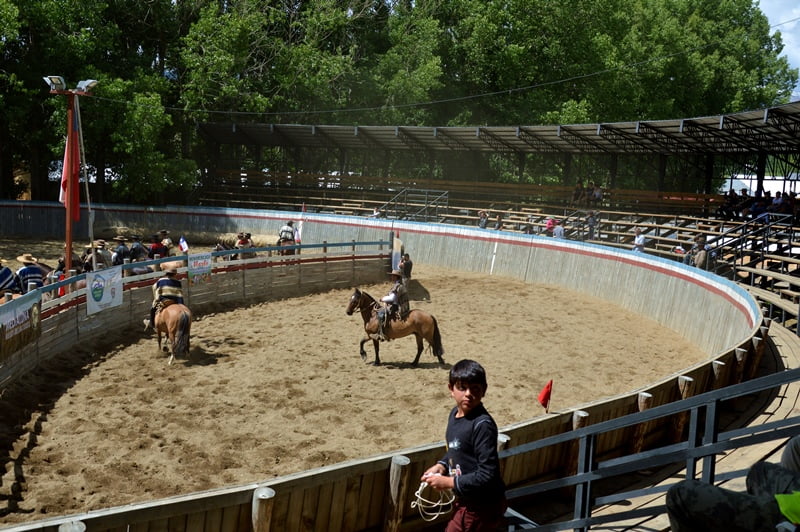
There, the riders must guide the bull along the barrier in an arc, preventing it from escaping. One of the riders must direct the horse towards the bull, pressing it against a barrier with the horse’s chest. This action is scored on a scale of 0 to 4 points. The maximum score being awarded for a successful hit near the bull’s tail. This is the most difficult move to execute, as it is easier for the bull to break free from the rider’s grip and escape. After three rounds, the riders switch positions.
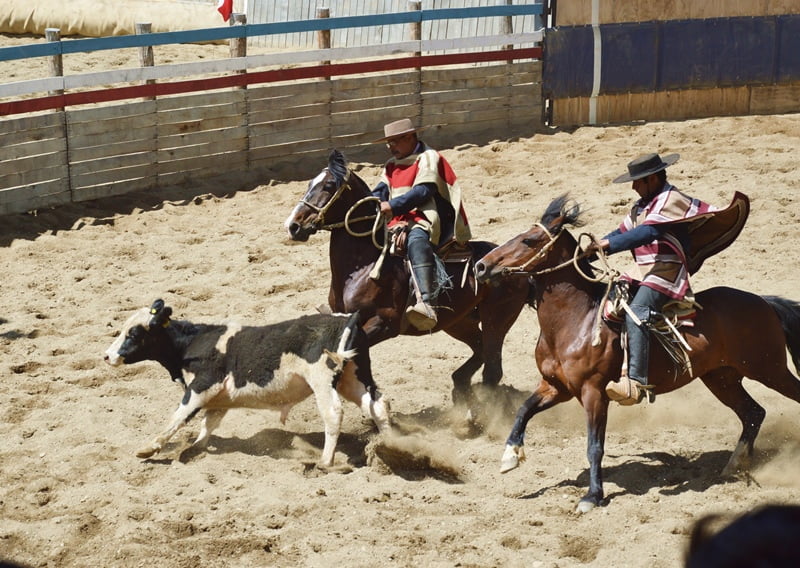
In Chilean rodeo, a team can score a maximum of 13 points for their performance: three runs of 4 points, plus an additional point for entering the arena correctly. This sport focuses on the technical details of the performance and the teamwork between the riders rather than demonstration of bravery.
Chilean Criollo Horse Breed
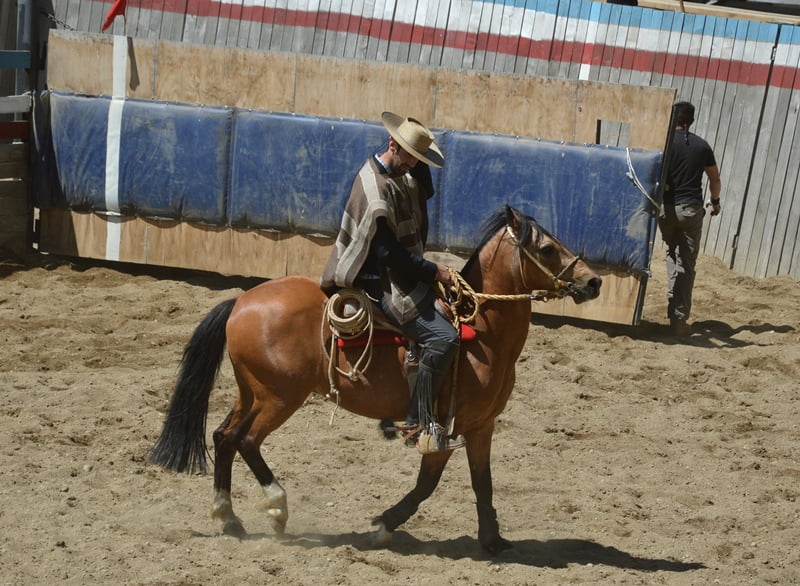
Chilean horse breeders believe that their breed of horses can be traced back to the 75 individuals that were brought to Chile by Pedro de Valdivia during the Spanish colonization. Local horses were never kept in herds, so different breeds did not mix. In fact, when Chileans brought their horses to Spain, the Spaniards did not recognize them as they seemed too small compared to their own larger breeds.
Chilean horses are quite small, only reaching 142 cm at the withers. They are sometimes referred to as ponies. Despite their small size, they are very hardy and well-suited to the harsh climate of Patagonia. These horses were used by the army during the Quiet Ocean War to cross the dry and unforgiving desert of Atacama.
As technology advanced, the need for horses decreased. The criollo breed was at risk of extinction. However, the new rules for rodeo competitions, which require at least two races to be composed of purebred Chilean horses, helped to save the breed.
Chilean rodeo is a unique part of the culture in Patagonia. If you have the opportunity to attend a competition, I highly recommend it. It’s a great way to immerse in the local culture.
